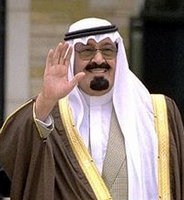U.S. President Barack Obama visited Saudi Arabia last week, where simmering dissent and repression in the Shiite-majority areas of the Sunni-dominated country continue to claim the lives of protesters and police three years after the Arab Spring. In an email interview, Stephane Lacroix, an associate professor at Sciences-Po who studies authoritarianism and Islamic social movements with a focus on Saudi Arabia, explained the status of Shiites in Saudi Arabia.
WPR: What is the status of Shiites in Saudi Arabia in terms of political rights and access to state resources?
Stephane Lacroix: Saudi Shiites, about 10 percent of the Saudi population, suffer from a range of types of discrimination. Because Saudi Arabia’s official religious doctrine, Wahhabism, brands Shiites as heretics, they encounter significant obstacles to the open practice of their faith. This concerns for instance the building of Shiite mosques and the performance of Shiite rituals. Beyond the religious aspect, there is a general distrust of Shiites on part of the Saudi state, which sees them as a potential “fifth column” whose loyalties lie abroad—in particular in Iran. Although this point is historically questionable (Saudi Shiites have had much closer ties to Iraq and other Shiite networks on the southern shore of the Persian Gulf), it has had significant consequences. Shiites are underrepresented in all sensitive positions in the Saudi state, including the army, the security apparatus and even the education system.

